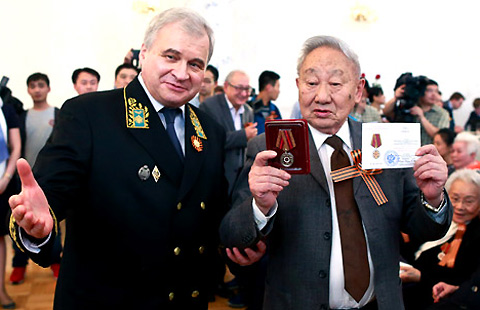Historic hotels offer more than a view
Updated: 2015-04-17 12:14
By Xu Junqian in Shanghai(China Daily USA)
|
||||||||
 |
|
The garden outside the Jinjiang Hotel's Grand Hall. The hall witnessed the signing of the Shanghai Communique, which signaled a new era of Sino-US relations. |
The 1,200-square-meter hall in the center of the Jinjiang Hotel is famous for serving as the venue where Sino-US relations were restored in the 1970s.
A spacious compound of three main buildings arranged around an evergreen lawn, the hotel was built in 1925 by a Jewish banker as his personal residence and given the name Cathay Mansion. Cathay is an alternative name for China in English that was popular for several centuries. The residence was taken over by the municipal government in Shanghai in 1951 and run as a state-owned luxury hotel.
Before the Shanghai Communique was signed at the hotel's grand hall in 1972, it had accommodated more than 300 visits by state leaders and government heads from all over the world. The diplomatic document was signed by Nixon and Mao on Feb 28, 1972 as a formal pledge to normalize relations.
But the short notice of Nixon's impending visit posed a challenge for the hotel's management team, said Qiu Huanxi, a retired hotel staffer who worked there at the time.
The weeklong visit not only marked the first time an incumbent US president had visited the People's Republic of China, but was also later appraised by Nixon as the "seven days that changed the world".
The Shanghai Communique, also known as the Joint Communique of the United States of America and the People's Republic of China, was signed and issued in Shanghai at the conclusion of Nixon's trip, even though most of the key meetings that led to its formulation had been held in Beijing and Hangzhou, Zhejiang province.
"We were told about the visit less than one week before (Nixon arrived)," said Qiu, who was part of the team organized to receive him.
The team consisted of 14 staff from the hotel, including a receptionist, barber, waiter and doorman. Part of the so-called "vanguard team", Qiu and his colleagues were supported by many more hotel staff and other figures, according to the hotel's archives.
Most of Nixon's food and beverages were flown in from the US. It was not until after the release of the Communique that Nixon ordered three dishes from the hotel's Chinese restaurant. They were: chicken, fried shrimp balls, and broad beans fried with mushrooms.
Unlike the situation that played out during a state banquet with then-premier Zhou Enlai, where Nixon courteously used chopsticks throughout the meal, Nixon finished the three dishes using knives and forks in his room, according to Qiu. "He finished them all and seemed quite impressed with each one," he added.
Nixon revisited the hotel during his third trip to China in 1993 but did not stay the night. Four years later, its Grand Hall was reconstructed and made 10 times larger.
Nixon stayed in the presidential suite on the 16th floor of the hotel's main building, which was the best room the city had to offer in the 1970s. It remains open today despite several renovations.
"Its glamor has yet to wane," said a representative of the hotel surnamed Wang.
Address: 59 South Maoming Road

 Top 10 foreign holders of US Treasuries
Top 10 foreign holders of US Treasuries
 Denmark's Queen Margrethe 75th birthday celebrated
Denmark's Queen Margrethe 75th birthday celebrated
 Lost in sandstorms
Lost in sandstorms
 New roles for technology: Rise of robots
New roles for technology: Rise of robots
 Strange but true: Getting ahead of the rest
Strange but true: Getting ahead of the rest
 Top 10 industries with most job-hoppers
Top 10 industries with most job-hoppers
 Russia honors Chinese veterans from WWII
Russia honors Chinese veterans from WWII
 Woman embroiders giant painting
Woman embroiders giant painting
Most Viewed
Editor's Picks

|

|

|

|

|

|
Today's Top News
China and the 2016 US election
World Bank, IMF: will work with AIIB
Ex-PM says US, China can be allies
Hainan Air links San Jose, Beijing
Carrying on a Chinese food legacy
America, Europe told to work with BRICS
Beijing film festival draws top moviemakers, Oscar winners
Chinese teachers mark progress
US Weekly

|

|







